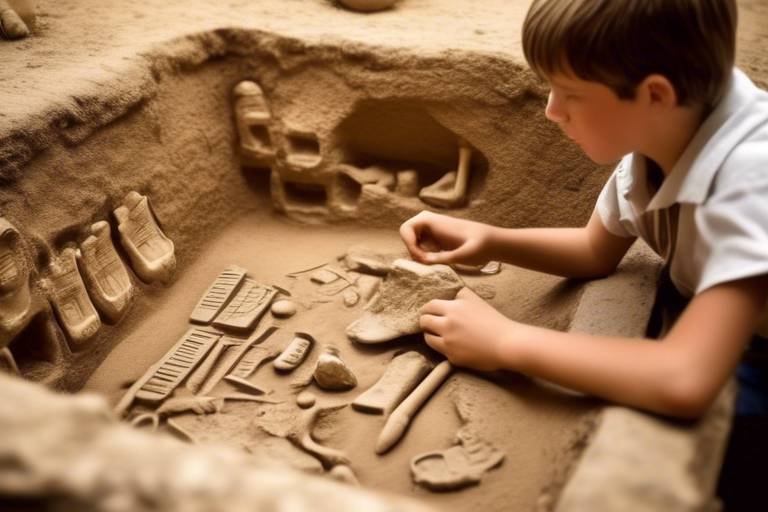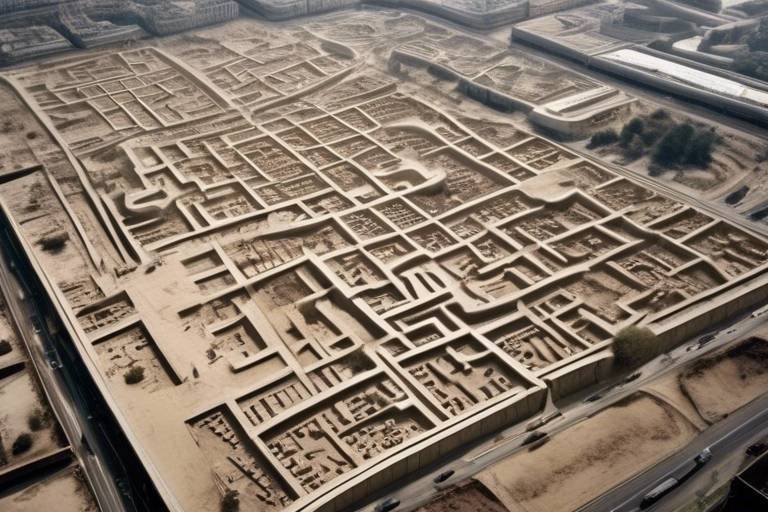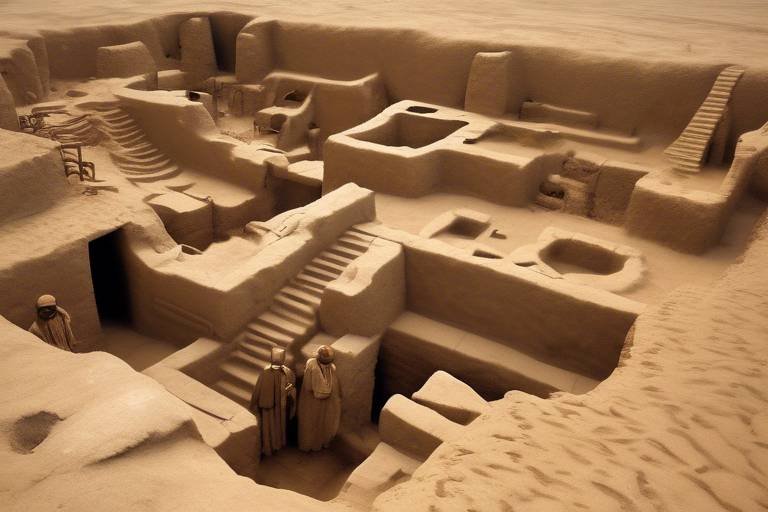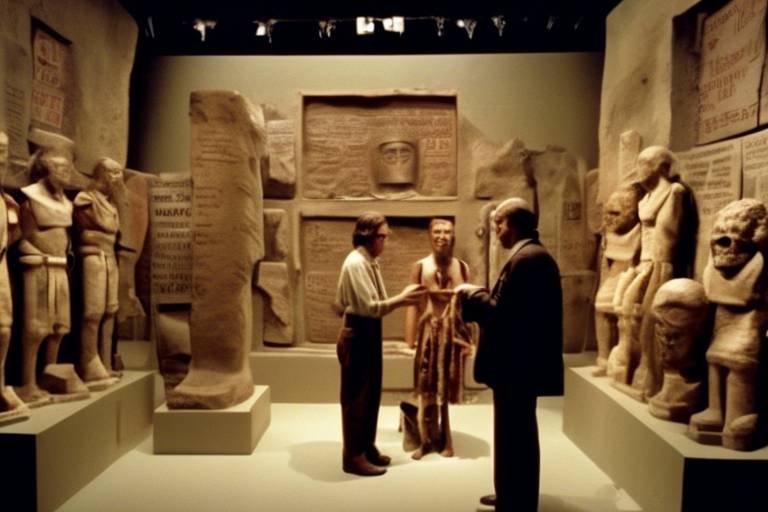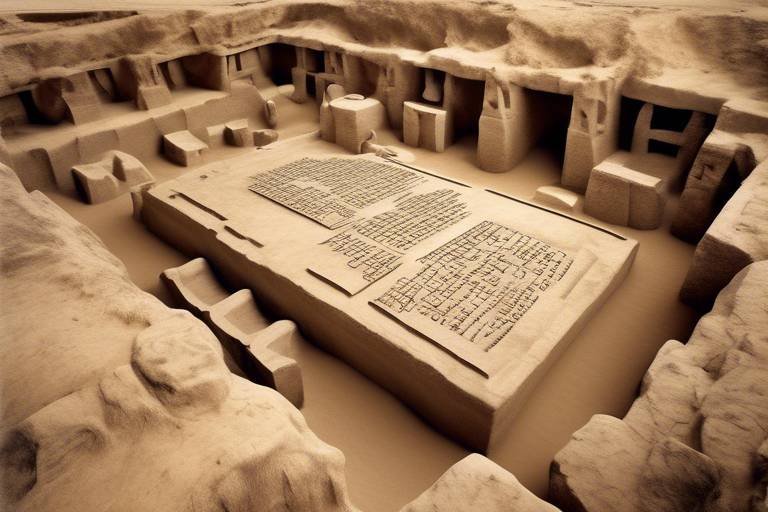The Role of Archaeology in Education
Archaeology plays a crucial role in education by offering unique learning experiences that go beyond textbooks and classrooms. By engaging students in hands-on excavations and artifact analysis, archaeology provides a practical approach to understanding historical concepts. This hands-on learning opportunity allows students to immerse themselves in the past, fostering a deeper connection to history.
Moreover, archaeology bridges interdisciplinary connections by integrating into subjects like history, science, and geography. This holistic approach broadens students' perspectives, showing them how different disciplines can intersect and enrich their understanding of the world. It encourages critical thinking and problem-solving skills by connecting various academic fields through the lens of archaeology.
One of the significant benefits of incorporating archaeology into education is the promotion of cultural understanding. By examining artifacts and archaeological sites, students gain insights into diverse societies throughout history. This exploration fosters cultural awareness and appreciation, encouraging students to respect and celebrate the richness of human heritage.
Furthermore, archaeology teaches students the scientific method through practical applications in archaeological investigations. From hypothesis formation to data collection and analysis, students learn how to approach problems systematically and draw conclusions based on evidence. This hands-on experience not only enhances their scientific literacy but also cultivates critical thinking skills essential for academic and real-world challenges.
Education in archaeology also emphasizes the importance of preservation and conservation of archaeological sites and artifacts. By educating students on safeguarding cultural heritage for future generations, it instills a sense of responsibility towards preserving history. Understanding the significance of conservation efforts ensures that valuable historical resources are protected and accessible for continued study and appreciation.

Hands-On Learning Opportunities
When it comes to learning about history and culture, there's nothing quite like getting your hands dirty – literally! Hands-on learning opportunities in archaeology provide students with a unique chance to step back in time and experience the thrill of discovery firsthand. By engaging in excavations and artifact analysis, students not only gain practical experience but also develop a deeper understanding of historical concepts that textbooks simply can't convey.
Imagine the excitement of unearthing a centuries-old artifact buried beneath the earth, feeling the weight of history in your hands as you carefully brush away the dirt to reveal its intricate details. This tactile experience not only brings the past to life but also fosters a sense of connection with those who came before us.
Through hands-on learning in archaeology, students learn to think like detectives, piecing together clues from the past to uncover the bigger picture. It's a bit like solving a puzzle, where each artifact is a piece that fits into the larger story of human civilization.
Moreover, by actively participating in excavations and analyses, students develop critical thinking skills as they evaluate evidence, make inferences, and draw conclusions based on their findings. This interactive approach not only makes learning more engaging but also empowers students to become active participants in their own education.
Hands-on learning opportunities in archaeology go beyond the classroom, offering students a chance to step outside their comfort zones and into the realm of exploration and discovery. It's a journey of intellectual curiosity and personal growth that leaves a lasting impact on students, inspiring them to see the world through a new lens of wonder and appreciation for the past.

Interdisciplinary Connections
When it comes to in the field of archaeology, the impact goes far beyond just historical studies. By integrating archaeology into various subjects such as history, science, and geography, educators can provide students with a more comprehensive and interconnected learning experience. This approach offers a holistic view of the past, encouraging students to see how different disciplines intersect and contribute to a deeper understanding of the world around them.
Imagine students exploring a historical site not just from a historical perspective but also through the lens of science and geography. They can analyze the artifacts found not only for their historical significance but also for the scientific methods used in their preservation and the geographical context in which they were discovered. This multidisciplinary approach not only enriches their knowledge but also helps them develop critical thinking skills by connecting seemingly disparate pieces of information.
Moreover, by incorporating archaeology into various subjects, educators can cater to different learning styles and interests, making the educational experience more engaging and relevant for students. For example, a student who is passionate about science may find the scientific methods applied in archaeology particularly intriguing, while a history enthusiast may appreciate the cultural insights gained from studying ancient artifacts.

Cultural Understanding
Exploring how archaeology enhances learning experiences and promotes critical thinking skills in educational settings.
Engaging students in excavations and artifact analysis to provide practical experience and foster a deeper understanding of historical concepts.
Integrating archaeology into various subjects such as history, science, and geography to offer a holistic approach to learning and broaden students' perspectives.
Archaeology plays a crucial role in promoting cultural understanding by allowing students to examine artifacts and sites from different time periods and civilizations. By studying these remnants of the past, students can gain insights into the beliefs, customs, and daily lives of ancient societies. This hands-on approach fosters empathy and appreciation for the diversity of human cultures throughout history.
Teaching students the scientific process through archaeological investigations, including hypothesis formation, data collection, and analysis.
Educating on the importance of preserving archaeological sites and artifacts to safeguard cultural heritage for future generations.
Exploring how past civilizations interacted with their environment through archaeological evidence and applying lessons to modern environmental challenges.
Utilizing digital tools like 3D modeling and GIS mapping to enhance archaeological education and facilitate virtual exploration of historical sites.
Involving local communities in archaeological projects to promote heritage awareness, social responsibility, and a sense of belonging to shared historical narratives.

Scientific Method Application
When it comes to in the field of archaeology, students are not just digging up artifacts; they are also digging into the scientific process itself. By engaging in archaeological investigations, students learn how to formulate hypotheses, collect data systematically, and analyze findings critically. This hands-on experience allows them to apply the scientific method in a real-world context, bridging the gap between theoretical knowledge and practical application.
Imagine students carefully documenting their excavation process, meticulously recording each layer of soil and every artifact uncovered. They are not merely uncovering ancient relics; they are unraveling mysteries using a structured and logical approach. Through this process, they develop analytical skills, attention to detail, and the ability to draw evidence-based conclusions - essential components of the scientific method.
Moreover, as students progress through the stages of an archaeological investigation, they are encouraged to question, experiment, and refine their methods. This iterative process mirrors the essence of scientific inquiry, where curiosity drives discovery and data-driven reasoning leads to meaningful insights. By immersing themselves in the scientific method within an archaeological context, students cultivate a deep appreciation for evidence-based research and the importance of systematic inquiry.
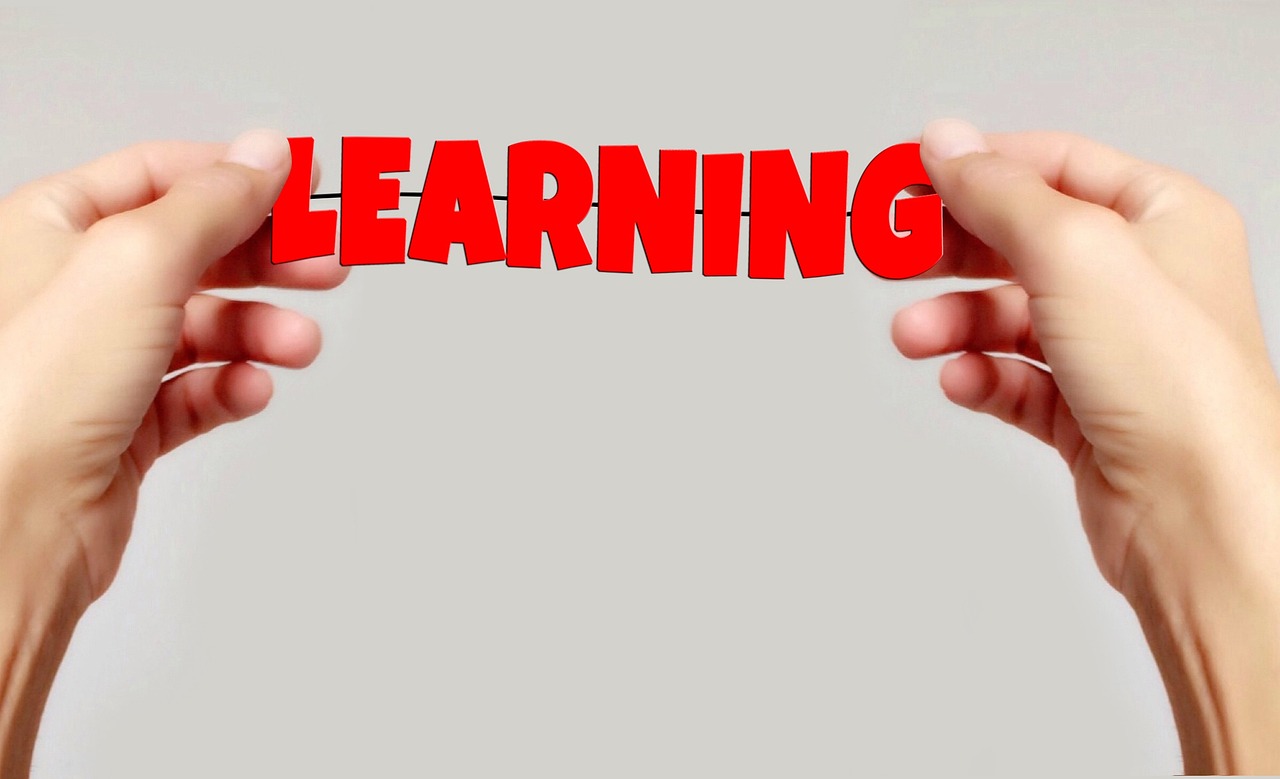
Preservation and Conservation
Preservation and conservation play a crucial role in the field of archaeology, ensuring that our rich cultural heritage is protected and passed down to future generations. By educating individuals on the significance of safeguarding archaeological sites and artifacts, we can preserve the tangible remains of our past and learn valuable lessons from history.
One of the key aspects of preservation is raising awareness about the importance of maintaining these sites in their original state. Through initiatives that emphasize the value of cultural heritage, communities can come together to support conservation efforts and prevent the destruction of archaeological treasures.
Conservation also involves the implementation of strategies to mitigate the impact of environmental factors on archaeological sites. By studying the effects of climate change, pollution, and human activities on these delicate remains, archaeologists can develop sustainable preservation methods to protect our shared history.
Furthermore, incorporating conservation practices into educational programs can instill a sense of responsibility and stewardship in students towards their cultural legacy. By actively engaging in the preservation of archaeological sites, individuals can contribute to the ongoing efforts to conserve our past for the benefit of future generations.
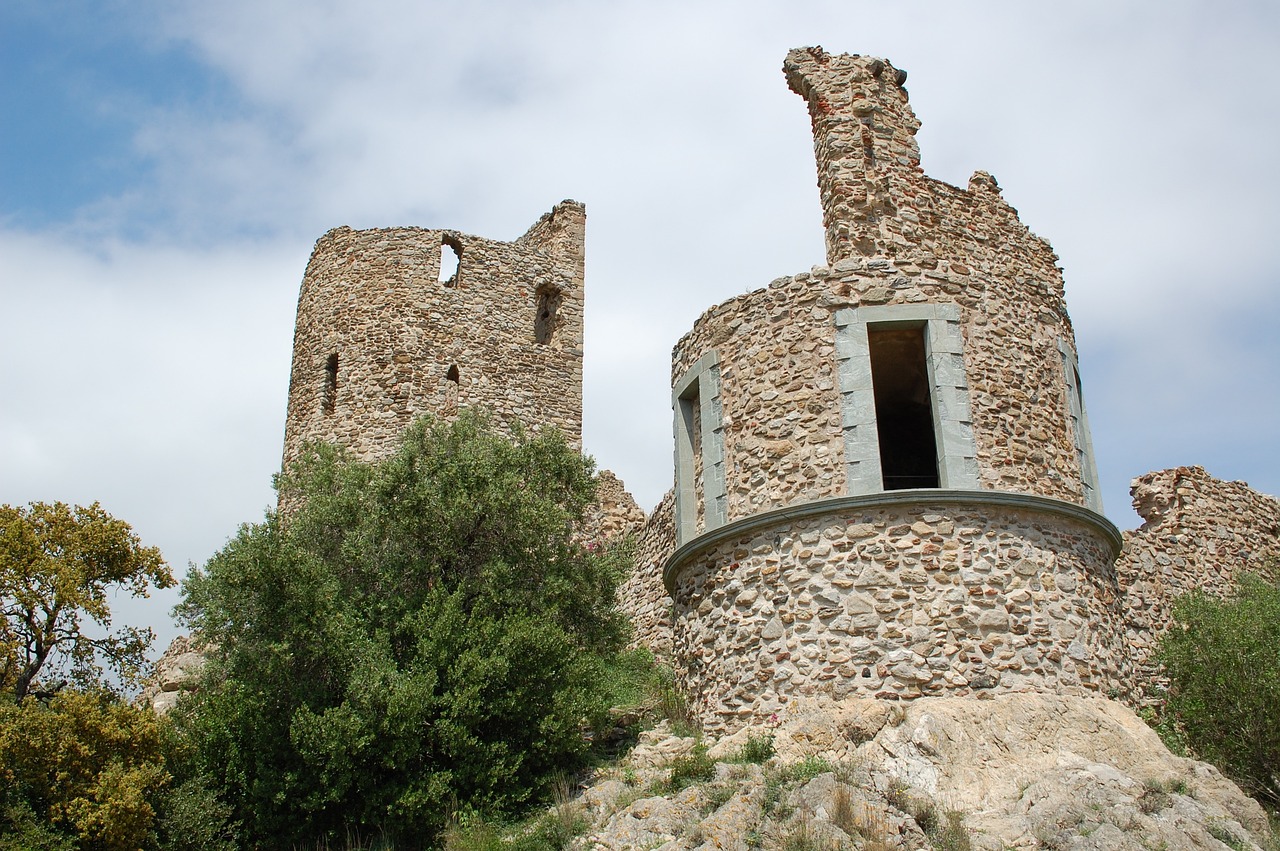
Environmental Impact Studies
Environmental Impact Studies in archaeology play a crucial role in understanding how past civilizations interacted with their surroundings and the consequences of these interactions. By examining archaeological evidence, researchers can uncover valuable insights into how ancient societies adapted to and influenced their environment. This knowledge can then be applied to modern-day environmental challenges, providing a historical perspective on sustainability and resource management.

Digital Technologies in Archaeology
When it comes to the field of archaeology, the integration of digital technologies has revolutionized the way we explore and understand ancient civilizations. Digital tools such as 3D modeling and Geographic Information Systems (GIS) mapping have opened up a whole new world of possibilities for archaeological education and research.
Imagine being able to virtually reconstruct a long-lost city or analyze intricate details of an artifact without even touching it. These technologies not only enhance the learning experience for students but also allow researchers to delve deeper into the past and uncover hidden secrets that were once inaccessible.
Through 3D modeling, archaeologists can create accurate visual representations of archaeological sites, enabling them to study spatial relationships and architectural features in a way that was previously impossible. This hands-on approach to virtual exploration brings history to life and engages students in a way that traditional textbooks cannot.
GIS mapping, on the other hand, allows researchers to analyze and interpret spatial data related to archaeological sites. By overlaying different layers of information, such as topography, soil composition, and artifact distribution, archaeologists can gain valuable insights into past human activities and settlement patterns.
Moreover, digital technologies enable collaboration among archaeologists from around the world, facilitating the sharing of data, research findings, and methodologies. This interconnectedness fosters a sense of community within the archaeological field and promotes a more comprehensive understanding of our shared human history.
In conclusion, the utilization of digital technologies in archaeology not only enhances educational experiences but also pushes the boundaries of archaeological research. By embracing these tools, we can uncover new discoveries, preserve cultural heritage, and inspire future generations to explore the mysteries of the past.

Community Engagement and Outreach
Community engagement and outreach play a crucial role in archaeology, fostering a sense of shared heritage and responsibility among local residents. By involving the community in archaeological projects, a deeper connection to the past is established, creating a sense of belonging and pride in preserving cultural heritage. Through hands-on participation in excavations and research, community members not only gain a better understanding of their history but also develop a sense of stewardship towards archaeological sites and artifacts.
Furthermore, community engagement in archaeology promotes social responsibility by encouraging individuals to actively contribute to the preservation and promotion of their shared cultural legacy. This collaborative approach also helps in breaking down barriers between professional archaeologists and the public, fostering mutual respect and understanding. By involving diverse community members in archaeological activities, a more inclusive and representative narrative of the past can be constructed, reflecting the richness and complexity of historical experiences.
Frequently Asked Questions
- What is the significance of archaeology in education?
Archaeology in education plays a crucial role in enhancing learning experiences by offering hands-on opportunities for students to engage in excavations and artifact analysis. It promotes critical thinking skills, cultural understanding, and interdisciplinary connections across various subjects.
- How does archaeology contribute to cultural awareness?
Archaeology contributes to cultural awareness by examining artifacts and sites, which in turn promotes appreciation of diverse societies throughout history. It allows students to explore different cultures, traditions, and ways of life, fostering a deeper understanding of the world's rich heritage.
- What are the benefits of incorporating digital technologies in archaeology?
Integrating digital tools like 3D modeling and GIS mapping in archaeology enhances educational experiences by facilitating virtual exploration of historical sites. These technologies provide interactive learning opportunities, making the study of archaeology more engaging and accessible to students.
- Why is community engagement important in archaeological projects?
Community engagement in archaeological projects promotes heritage awareness, social responsibility, and a sense of belonging to shared historical narratives. It fosters a collaborative approach to preserving cultural heritage and encourages active participation in safeguarding archaeological sites for future generations.

